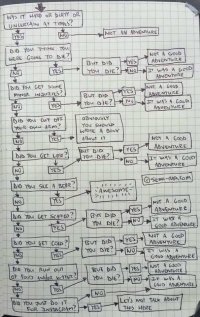Ericson 39 coming out of New Zealand headed for Tonga:
Wind 92+ Knots (Our Anemometer pegged at 65 knots, the weather station on the Kermadec Islands when we were passing them, contacted by radio had theirs pegged at 92 Knots).
Seas 45 feet Plus, Measured by the height of the second spreader. Could have been higher, really hard to know except that there was only a small patch of sky visible when you were in the troughs.
In the group of boats that left at the same time we did, 4 sank, 1 with all hands, another crew fished out of the ocean by helicopter, two in life rafts. 5 Other boats headed back after the storm that wasn't supposed to have happened passed over them. 3 of them had to be towed in as I recall.
We ripped the traveler off of one side of the deck, (Turns out the backing plates on the traveler on the 39 were a bad joke). We bent the anchor roller retrieving the parachute sea anchor (User error and a long anchor roller). We did temporary repairs at sea. We had to caulk, and rebed later, the port dead lights, but they held through an amazing beating they took at one point, and sailed into Tonga.
Fun, no you couldn't even see fun from where we were....
My wife asked me if I was afraid, I lied and said no.. I asked her the same question, she said no... We both knew our spouse was lying to us, but never pointed that out......
Our 39 took care of us through that storm which would have been considered a hurricane outside of the southern ocean sailing.
Our 46 has been through a number of full gales. Both boats took care of us, they were well built and we took care of them first....

